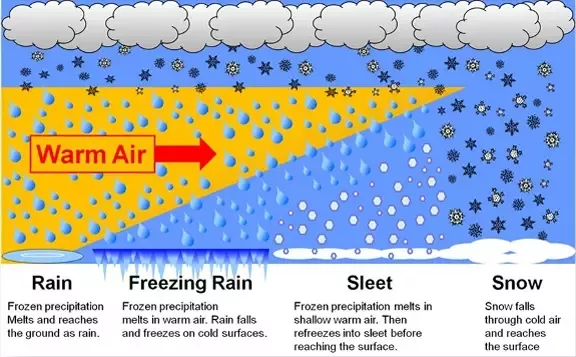The new method joins weather conditions gauges with an AI condition in view of examinations of past lightning occasions. The cross breed strategy, introduced at the American Geophysical Association’s fall meeting, can estimate lightning over the southeastern US two days sooner than the main existing method.
“This exhibits that estimates of serious climate frameworks, like rainstorms, can be improved by utilizing techniques in light of AI,” says Wei-Yi Cheng, who accomplished the work for his College of Washington doctorate in environmental sciences. “It empowers the investigation of AI strategies for different sorts of extreme weather conditions conjectures, for example, cyclones or hailstorms.”
Scientists prepared the framework with lightning information from 2010 to 2016, allowing the PC to find connections between climate factors and lightning bolts. Then, at that point, they tried the strategy on climate from 2017 to 2019, looking at the artificial intelligence upheld procedure and a current material science based technique, utilizing genuine lightning perceptions to assess both.
The new strategy figure lightning with similar expertise around two days sooner than the main method in places, similar to the southeastern US, that get a great deal of lightning. Since the technique was prepared on the whole US, its presentation wasn’t as precise for where lightning is more uncommon.
Photograph by Johannes Plenio on Unsplash
The methodology utilized for examination was an as of late evolved procedure to estimate lightning in view of how much precipitation and the climb speed of tempest mists. That technique has extended more lightning with environmental change and a continued expansion in lightning over the Icy.
“The current technique simply duplicates two factors. That comes from a human’s thought, it’s basic. However, it’s not really the most ideal way to utilize these two factors to foresee lightning,” Kim says.
The AI was prepared on lightning perceptions from the Overall Lightning Area Organization (WWLLN), a cooperative based at the College of Washington that has followed worldwide lightning beginning around 2008.
“AI requires a ton of information — that is one of the essential circumstances for an AI calculation to do a few significant things,” Kim says. “A long time back, this could not have possibly been conceivable on the grounds that we needed more information, even from WWLLN.”
Business organizations of instruments to screen lightning currently exist in the US, and fresher geostationary satellites can screen one region constantly from space, providing the exact lightning information to make more AI conceivable.
“The key elements are the sum and the nature of the information, which are precisely exact thing WWLLN can give us,” Cheng says. “As AI strategies advance, having an exact and dependable lightning perception dataset will be progressively significant.”
The scientists desire to further develop their strategy utilizing more information sources, more climate factors, and more complex methods. They might want to further develop expectations of specific circumstances like dry lightning, or lightning without precipitation, since these are particularly hazardous for out of control fires.
The analysts accept their technique could likewise be applied to longer-run projections. Longer-range patterns are significant mostly on the grounds that lightning influences air science, so anticipating lightning prompts better environment models.
“In environmental sciences, as in different sciences, certain individuals are as yet distrustful about the utilization of AI calculations — in light of the fact that as researchers, we have no faith in something we don’t have the foggiest idea,” Kim says. “I was one of the doubters, however subsequent to seeing the outcomes in this and different examinations, I’m persuaded.
